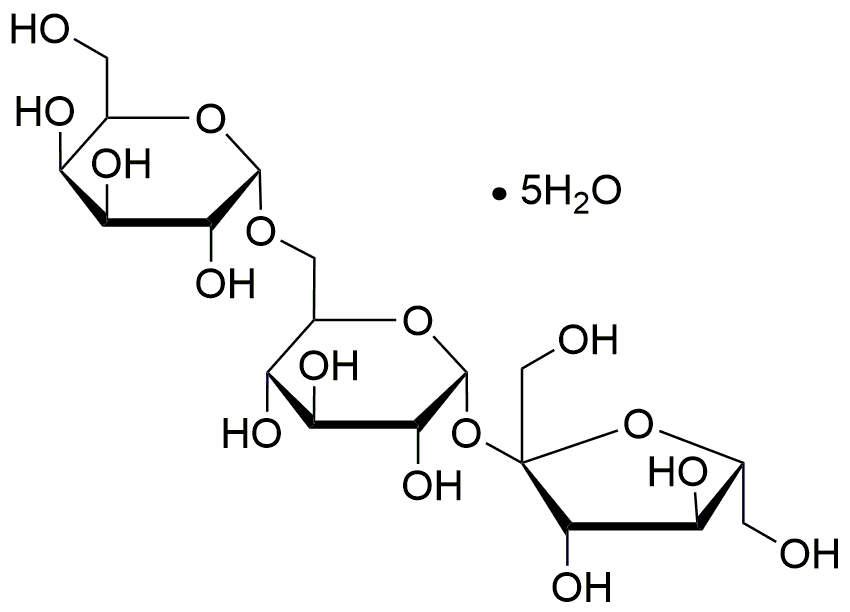D-(+)-Raffinose pentahydrate is widely utilized in research focused on:
- Food Industry: This compound serves as a prebiotic, promoting gut health by enhancing beneficial bacteria in the digestive system. It's commonly added to functional foods and dietary supplements.
- Pharmaceuticals: Used as an excipient in drug formulations, it helps improve the stability and solubility of active ingredients, making medications more effective.
- Biotechnology: In cell culture, it acts as a carbon source for microorganisms, aiding in the production of biopharmaceuticals and enzymes.
- Agriculture: Employed in animal feed, it enhances nutrient absorption and supports overall livestock health, leading to better growth rates and productivity.
- Cosmetics: Incorporated into skincare products for its moisturizing properties, it helps maintain skin hydration and improves product texture.
General Information
Properties
Safety and Regulations
Applications
D-(+)-Raffinose pentahydrate is widely utilized in research focused on:
- Food Industry: This compound serves as a prebiotic, promoting gut health by enhancing beneficial bacteria in the digestive system. It's commonly added to functional foods and dietary supplements.
- Pharmaceuticals: Used as an excipient in drug formulations, it helps improve the stability and solubility of active ingredients, making medications more effective.
- Biotechnology: In cell culture, it acts as a carbon source for microorganisms, aiding in the production of biopharmaceuticals and enzymes.
- Agriculture: Employed in animal feed, it enhances nutrient absorption and supports overall livestock health, leading to better growth rates and productivity.
- Cosmetics: Incorporated into skincare products for its moisturizing properties, it helps maintain skin hydration and improves product texture.
Documents
Safety Data Sheets (SDS)
The SDS provides comprehensive safety information on handling, storage, and disposal of the product.
Product Specification (PS)
The PS provides a comprehensive breakdown of the product’s properties, including chemical composition, physical state, purity, and storage requirements. It also details acceptable quality ranges and the product's intended applications.
Certificates of Analysis (COA)
Search for Certificates of Analysis (COA) by entering the products Lot Number. Lot and Batch Numbers can be found on a product’s label following the words ‘Lot’ or ‘Batch’.
Numéro de catalogue
Numéro de lot/série
Certificates Of Origin (COO)
This COO confirms the country where the product was manufactured, and also details the materials and components used in it and whether it is derived from natural, synthetic, or other specific sources. This certificate may be required for customs, trade, and regulatory compliance.
Numéro de catalogue
Numéro de lot/série
Safety Data Sheets (SDS)
The SDS provides comprehensive safety information on handling, storage, and disposal of the product.
DownloadProduct Specification (PS)
The PS provides a comprehensive breakdown of the product’s properties, including chemical composition, physical state, purity, and storage requirements. It also details acceptable quality ranges and the product's intended applications.
DownloadCertificates of Analysis (COA)
Search for Certificates of Analysis (COA) by entering the products Lot Number. Lot and Batch Numbers can be found on a product’s label following the words ‘Lot’ or ‘Batch’.
Numéro de catalogue
Numéro de lot/série
Certificates Of Origin (COO)
This COO confirms the country where the product was manufactured, and also details the materials and components used in it and whether it is derived from natural, synthetic, or other specific sources. This certificate may be required for customs, trade, and regulatory compliance.


